To master progressive muscle relaxation meditation, follow these five steps: First, understand the technique's principles of tensing and relaxing muscle groups. Second, create a calm, comfortable environment for practice. Third, begin with deep breathing exercises to center yourself. Fourth, systematically tense and relax muscle groups from your toes to your head, focusing on the sensations. Finally, commit to regular practice, aiming for 15-20 minutes daily. By consistently applying these steps, you'll develop a powerful tool for stress management and overall well-being. Discover how this simple yet effective technique can transform your daily life and reveal a deeper sense of relaxation.
Key Takeaways
- Create a calm environment with comfortable seating, dim lighting, and minimal distractions.
- Begin with deep breathing exercises to center yourself and prepare for relaxation.
- Systematically tense and relax muscle groups from toes to head, holding tension for 5-10 seconds.
- Practice regularly, aiming for 15-20 minutes daily at a consistent time.
- Focus on the sensations of tension and relaxation, using visualization to enhance the experience.
Understand the Technique
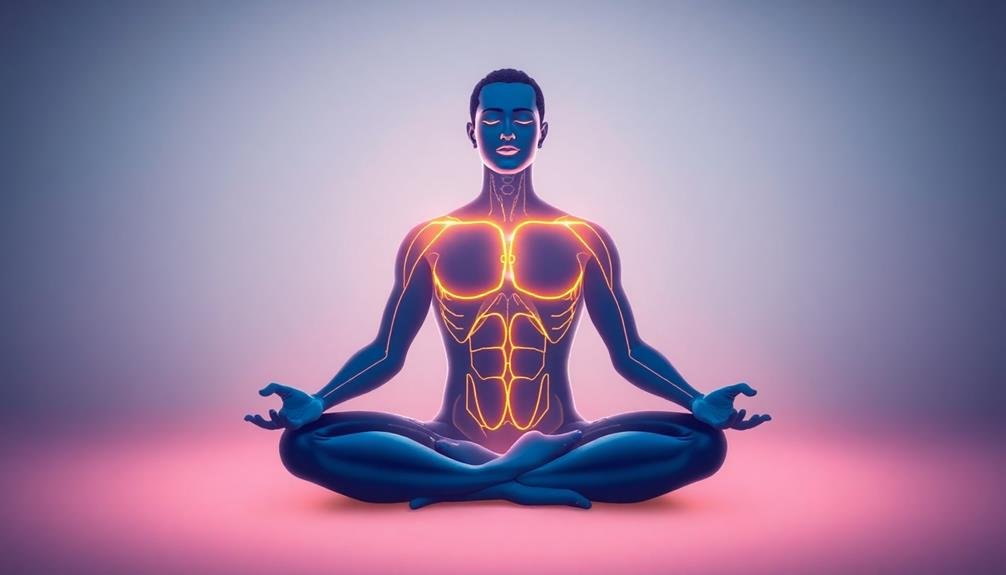
Progressive muscle relaxation (PMR) is a powerful stress-reduction technique that involves tensing and then relaxing different muscle groups in your body.
It's based on the principle that physical relaxation leads to mental calmness. By systematically tensing and releasing muscles, you'll learn to recognize the difference between tension and relaxation, allowing you to achieve a deeper state of calm.
The process typically starts with your toes and moves upward to your head. You'll tense each muscle group for about 5-10 seconds, then release the tension and focus on the feeling of relaxation for 10-20 seconds before moving on.
This deliberate contrast helps you become more aware of physical sensations and ultimately gain better control over your body's stress response.
PMR can be practiced anywhere, but it's best to start in a quiet, comfortable place where you won't be disturbed. With regular practice, you'll be able to relax more quickly and in various situations.
It's important to maintain a steady breathing pattern throughout the exercise and to avoid straining your muscles when tensing them.
Prepare Your Environment
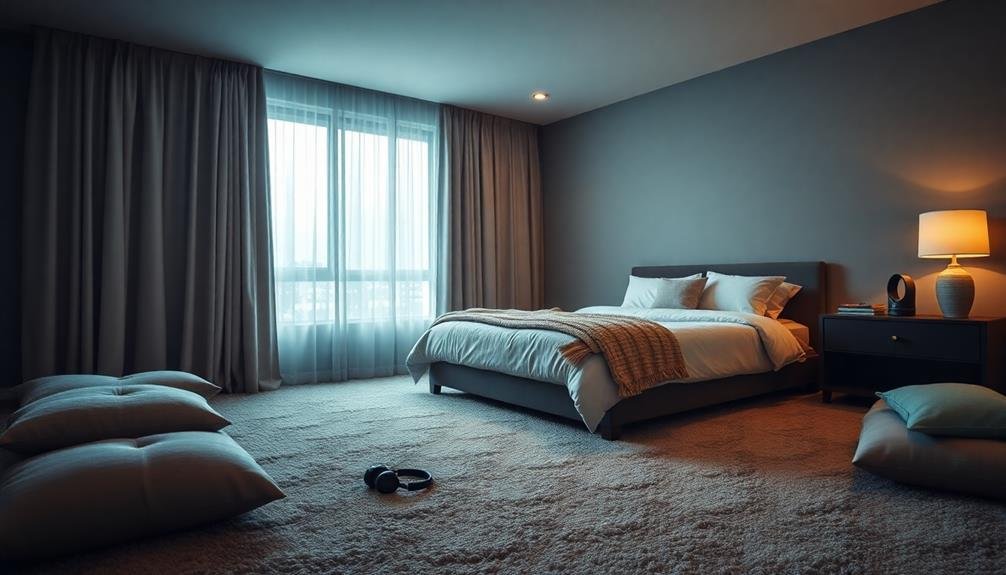
Before you begin your progressive muscle relaxation practice, it's crucial to set up an environment conducive to relaxation. Choose a quiet, comfortable space where you won't be disturbed for at least 15-20 minutes. This could be a bedroom, living room, or even a secluded outdoor area.
Ensure the temperature is comfortable, neither too hot nor too cold. Dim the lights or use soft, warm lighting to create a calming atmosphere. If you prefer, light some scented candles or use an essential oil diffuser with relaxing fragrances like lavender or chamomile.
Wear loose, comfortable clothing that won't restrict your movement or breathing. Remove any jewelry or accessories that might distract you during the practice.
Choose a comfortable position, either lying down on a yoga mat or sitting in a supportive chair. If you're lying down, you may want to use a pillow to support your head and neck, and a blanket to keep warm.
Silence your phone and any other potential sources of interruption. Consider using a white noise machine or playing soft, ambient music to mask any background noises and further enhance your relaxation experience.
Start With Breathing Exercises
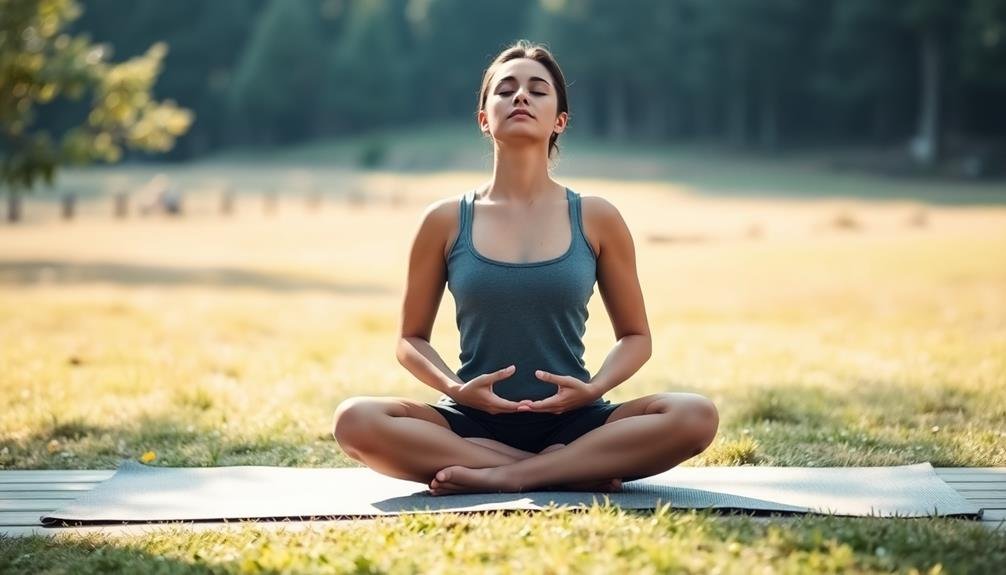
Beginning your progressive muscle relaxation session with focused breathing exercises sets the stage for deeper relaxation. Start by sitting or lying comfortably, closing your eyes, and taking a few deep breaths. Focus on your natural breathing rhythm, noticing the rise and fall of your chest and abdomen.
Next, practice diaphragmatic breathing. Inhale slowly through your nose, allowing your belly to expand. Hold for a moment, then exhale gradually through your mouth, feeling your belly contract. Repeat this process for several minutes, concentrating on the sensations of each breath.
As you continue breathing, try to let go of any tension or stress you're holding in your body. With each exhale, imagine releasing negative energy and allowing your muscles to soften.
To enhance your breathing exercise, you can:
- Count your breaths, inhaling for 4 counts and exhaling for 6
- Visualize a calming scene or color with each breath
- Place one hand on your chest and one on your belly to feel the breath's movement
- Use a simple mantra or phrase to focus your mind
Once you feel centered and relaxed, you're ready to move on to the progressive muscle relaxation techniques.
Tense and Relax Muscle Groups
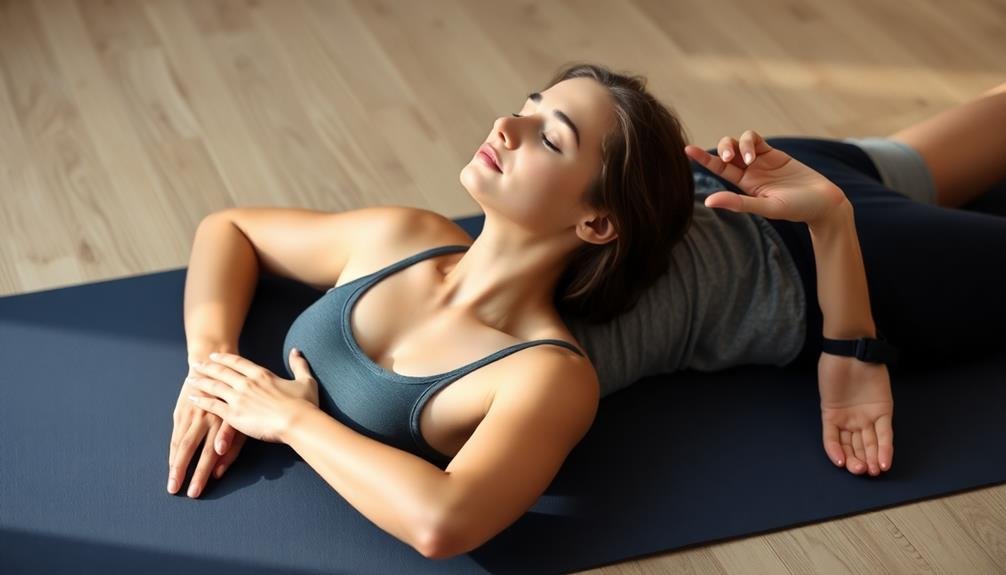
The core of progressive muscle relaxation lies in systematically tensing and relaxing different muscle groups throughout your body. Begin with your feet and work your way up to your head. For each muscle group, tense the muscles as tightly as you can for about 5 seconds, then release the tension and relax for 10-15 seconds.
Start with your toes, curling them tightly, then releasing. Move to your feet, calves, thighs, buttocks, abdomen, chest, arms, hands, shoulders, neck, and finally, your face. As you tense each muscle group, focus on the sensation of tightness and strain. When you relax, pay attention to the feeling of warmth and looseness that follows.
It's important to maintain your breathing rhythm throughout this process. Inhale as you tense your muscles and exhale as you relax them. This synchronization helps deepen the relaxation effect.
If you notice any pain or discomfort while tensing a particular muscle group, skip it and move on to the next. With practice, you'll become more aware of tension in your body and better able to release it, even in stressful situations.
Practice Regularly for Best Results
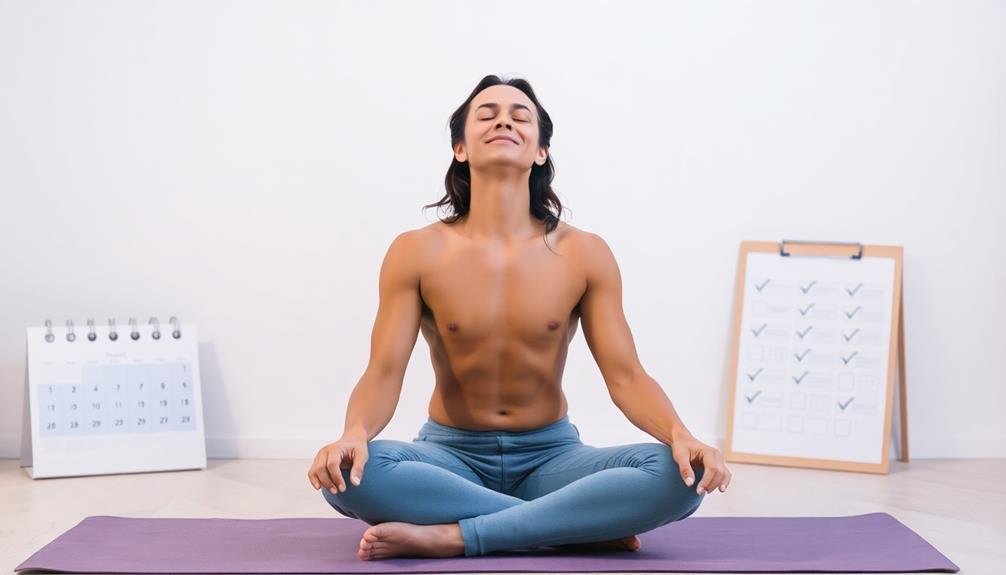
To reap the full benefits of progressive muscle relaxation, you'll need to make it a regular part of your routine. Consistency is key when developing any new habit, and this technique is no exception. Aim to practice at least 15-20 minutes daily, preferably at the same time each day. This will help you establish a routine and make it easier to stick to your practice.
As you continue to practice, you'll likely notice improvements in your ability to relax and manage stress. You may find that you can achieve a state of relaxation more quickly and easily over time.
Don't be discouraged if you don't see immediate results; like any skill, progressive muscle relaxation takes time to master.
To help you stay motivated and committed to your practice, consider:
- Setting reminders on your phone or calendar
- Tracking your progress in a journal or app
- Practicing with a friend or family member for accountability
- Rewarding yourself for consistent practice
Remember that the goal is to make progressive muscle relaxation a natural part of your daily life. With regular practice, you'll develop a valuable tool for managing stress and promoting overall well-being.
Frequently Asked Questions
Can Progressive Muscle Relaxation Help With Chronic Pain Conditions?
Yes, progressive muscle relaxation can help with chronic pain conditions. You'll learn to relax tense muscles, reduce stress, and improve body awareness. It's a valuable tool that can decrease pain perception and enhance your overall well-being.
How Long Does a Typical Progressive Muscle Relaxation Session Last?
You'll typically spend 10-30 minutes on a progressive muscle relaxation session. It's flexible, though. You can adjust the length based on your schedule and needs. Some people prefer shorter sessions, while others enjoy longer, more in-depth practices.
Are There Any Potential Side Effects of Practicing Progressive Muscle Relaxation?
You'll generally experience few side effects from progressive muscle relaxation. However, you might feel temporary discomfort or dizziness. If you have any injuries or medical conditions, it's best to consult your doctor before starting this practice.
Can Children Benefit From Progressive Muscle Relaxation Techniques?
Yes, children can benefit from progressive muscle relaxation. You'll find it helps kids reduce stress, anxiety, and improve sleep. It's easy for them to learn and can be a fun, interactive way to teach body awareness and relaxation skills.
Is It Safe to Practice Progressive Muscle Relaxation During Pregnancy?
Yes, it's generally safe to practice progressive muscle relaxation during pregnancy. You'll find it can help reduce stress and improve sleep. However, you should always consult your healthcare provider before starting any new relaxation techniques while pregnant.
In Summary
You've now learned the essential steps to master progressive muscle relaxation meditation. Remember, it's a skill that improves with practice. Don't get discouraged if you struggle at first; it's normal. As you continue to use this technique, you'll find it easier to relax your body and calm your mind. Make it a regular part of your routine, and you'll soon reap the benefits of reduced stress and improved overall well-being.





Leave a Reply